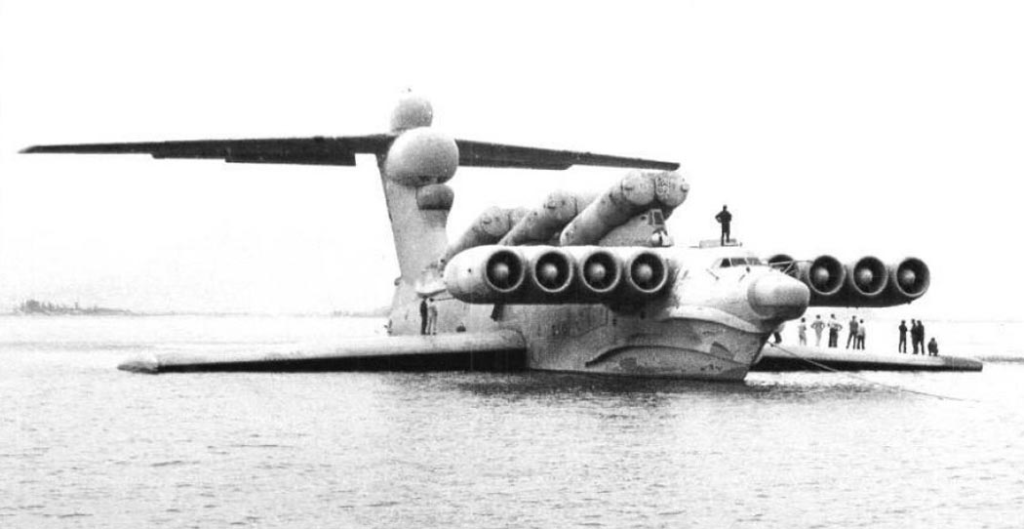At the height of the Cold War, with nuclear anxiety at a fever pitch, the United States launched their first spy satellites, the Corona. Tasked with photographing deep inside the Soviet Union. US Intelligence was focused on searching for signs of nuclear weapon development and testing, but found a lot more than what they were expecting for. These early satellites were launched with rolls of films with no-way of transmitting the data contained within them to earth through electronic means, and thus the films had to be recovered and developed here on the earth. Once the film was filled the satellite would eject a re-entry vehicle, containing the precious undeveloped photos, back to earth where they were caught by a passing plane as they drifted down.
How the name ‘Caspian Sea Monster’ derived
On one such mission a strange object began to emerge from the Caspian Sea as the film developed. A gigantic aircraft, nearly 100 meters long with short stubby wings, much too short to fly like a conventional aircraft. US Intelligence had never seen anything like it before. As they received more pictures, it was clear that the craft was moving at the same speed as a traditional aircraft, while outsizing even the largest of modern day American military aircrafts like the Lockheed C-5M. It was even emblazoned with the flag of the Soviet Navy, not the Soviet Air Force. This discovery set an alarm bells off within US intelligence. Had the Soviets developed a breakthrough in propulsion which could give them the upper hand in naval combat? Confused on what they were seeing the US dubbed the machine “The Caspian Sea Monster”
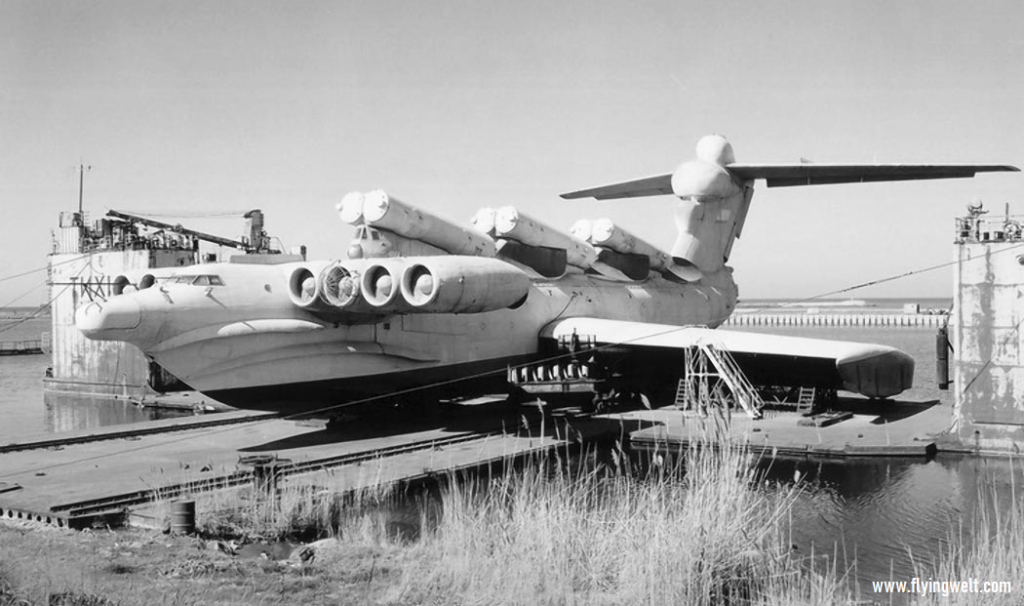
But the Soviets weren’t developing a gigantic hydrofoil or seaplane. This giant aircraft secretly being developed was actually an ‘ekranoplan’, a gigantic vessel capable of skimming across the oceans’s surfaces at high speeds. In 1962, the Central Hydrofoil Design Bureau assigned Chief Designer Rostislav Aleeyev to begin working on a prototype plane. Alleys had cut his teeth developing hydrofoil planes like the Raketa. These craft could easily be defined as a boat. They used a hydrofoil, essentially a wing designed to act in water, to lift the boats hull out of the water as it gained speed, allowing it to reduce drag and increase top speeds, but the Soviet wanted to take it a step further. The Ekranoplan would make use of something called ‘Ground Effect’ to fly at a very low altitude above the ocean’s surface.
Ground Effect
Ground effect occurs when a feed winged aircraft flies at an altitude less than the length of its wingspan. As the large masses of air comes into contact with the aircraft, the profile of wings deflect the air downward, thereby compressing the air between the wings and the ground. This trapped air causes an area of higher than normal pressure underneath the wings resulting in a boost to lift. This happens with all aircraft during take off and landing, and is something all pilots have to learn to deal with. For example some aircrafts can get off the ground when overloaded, but would not be able to climb past the altitude where ground effect is in play. Ekranoplan are designed in such a way to maximise this effect, and never leave the ground effect zone. Just as the aircraft gets off the ground when overloaded, the Ekranoplan can be heavier without the need for extra power. An aircraft with this ability would be a powerful tool in open sea combat. It would fly under enemy radar for much longer, due to radar shadow under the earth’s curvature. It would be capable of transporting tonnes of equipments and personnels quickly, while avoiding enemy mines and torpedoes, or it could be fitted with weapons of its own to quickly attack enemy vessels before escaping.
The first prototype KM
The appeal of the technology was enormous, and the first prototype named the ‘KM’ was built and secretly transported to the Caspian Sea to begin testing. This enormous vehicle instantly came the largest aircraft ever built with a wingspan of 37.6 metres and a length of 92 meters. It weighed a massive 240 tonnes ut it could take-off with almost double of that power thanks to. Powered eight Dorynin VD-7 turojets mounted at the front and two on the tail which provided a total of 1275 KN of thrust, out 30% more than a Boeing 747. The first test flight of the KM took place on the 16th October 1966 with Chief Designer Alleys on board.
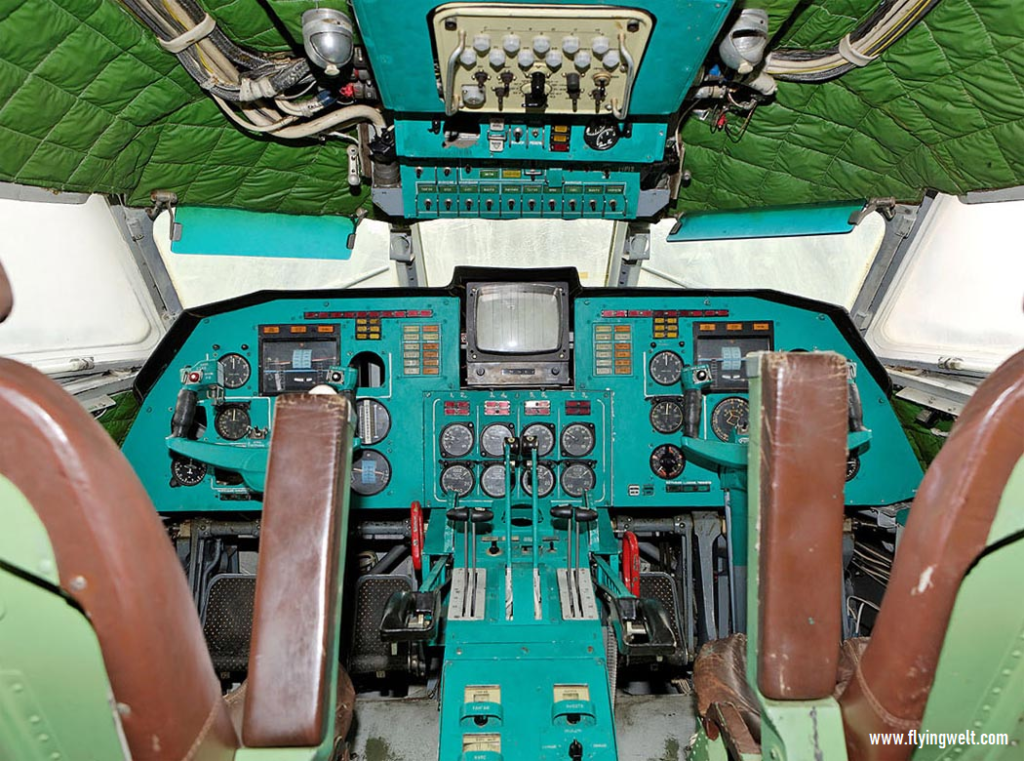
At the time, it was forbidden for Soviet aircraft designers to be on board test vehicle like this, in case they were involved in an accident ut test pilot Vladimir Loginov loxied for Alexeyev to e on board to allow him to experience and refine his designs. The first tests were successful, showing that the KM could fly with optimum fuel efficiency at 430 km/h and with a maximum operational speed of 500 km/h. During some high speed tests, it is claimed that KM had achieved a top-speed of 650 km/h.
Ekranoplan Orlyonok
The KM was a valuable proof of concept and laid the groundwork for all future Ekranoplanes. Alleys took the lessons learned and began to develop a new transport version design specifically for the transport of military equipment and troops, called the Orlyonok. This was a much smaller variant, 58 metres long with a 31.5 metre wingspan and a maximum takeoff weight of 140 metric tonnes. It’s engine layout was fascinating, with a massive NK-12 turboprop engine mounted on the tail as far away from the salt water as possible. These massive 6-metre diameter counter rotating turbo-propellers developed 11000 kW of power, making it the most powerful turboprop to ever enter into service. It also featured two nose mounted turbofan engines with air intakes on top of the nose to minimize water intake.
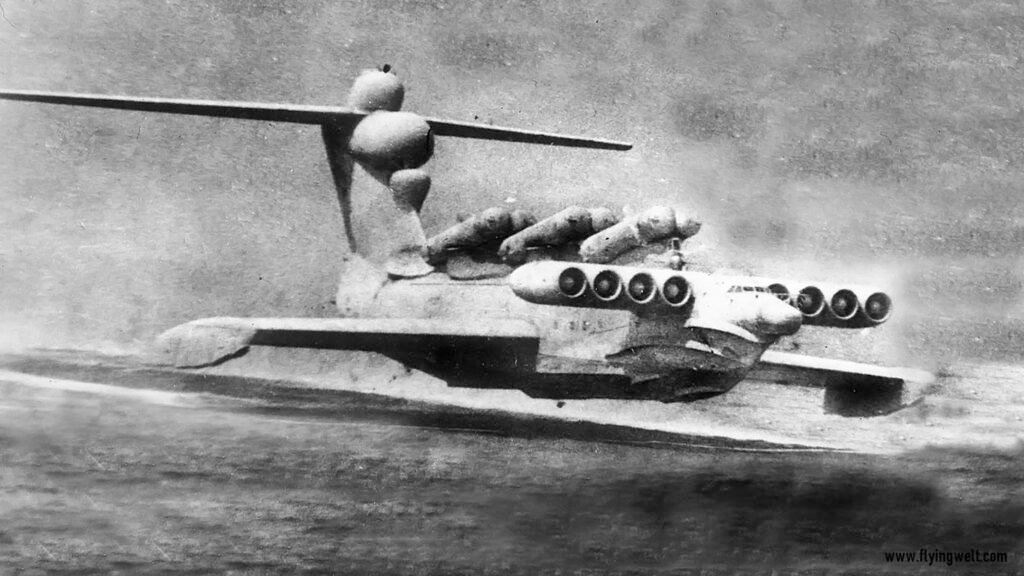
The exhaust of these engines were pointed under the wings to enhance the ground-effect phenomenon y bolstering the air cushion with high pressure output of the jet engine. These engines were only needed on take-off before the plane could gain the speed needed to develop enough lift through the wing in ground effect. Once this was achieved they were shut down to decrease fuel consumption. The Orlinok featured a nose mounted cargo-door and while to allow the plane to drive onto land and unload. This was a fully functional Ekranoplan and actually entered and remained in service until 1993, although only 4 were built.
Ekranoplan Lun
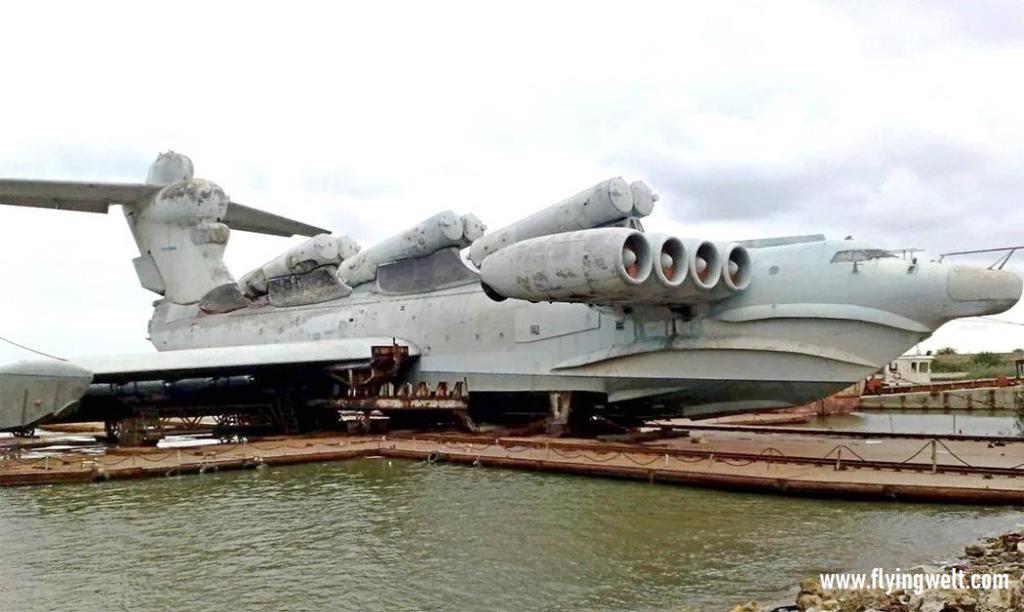
With Alexeyev out of the picture and the Soviet Union on the edge of collapse, development of Ekranoplanes in the Soviet Union slowly began to fade. They managed to develop a slightly smaller version of the KM, designed to launch anti-ship missiles while cruising on the sea. In 1987, the first version of the aircraft was built and named ‘Lun’. This aircraft weighed 286 tonnes, had a length of 74 metre and wingspan of 44 metre. The tail mounted engines were removed completely. It was instead powered y eight NK-87 turbofans mounted at the front of the craft, each producing 127 kW of thrust.
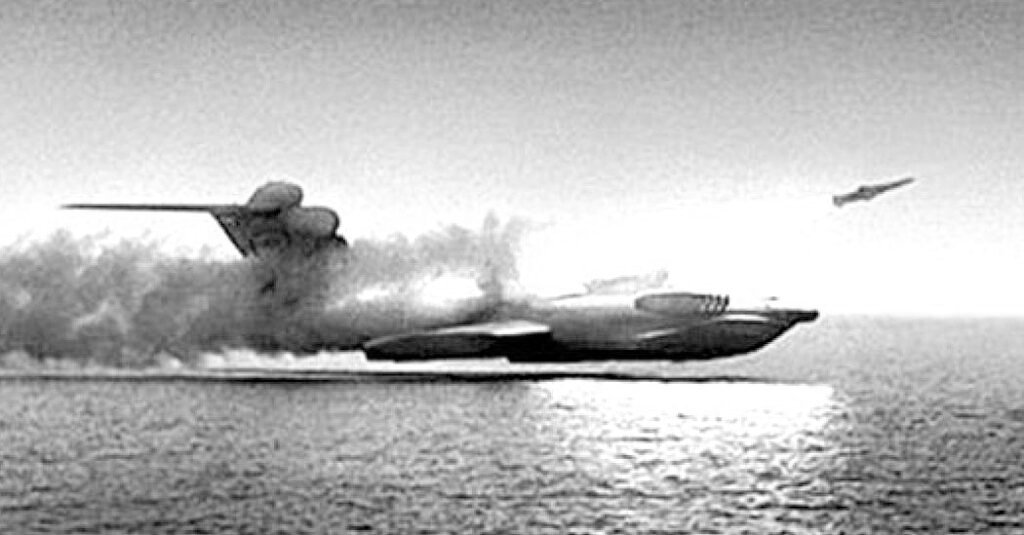
In 1987, the first ekranoplane-missile carrier “Lun”, carrying six containers with guided anti-ship missiles “Moskit”, was completed and entered testing. The Lun’s seaworthiness during takeoff and landing was 5-6 points. But the beginning of the collapse of the USSR prepared a sad fate for the unique machine and all ekranoplanes in general. The landslide reduction of the armed forces and growing economic difficulties put the Orlyonok ekranoplanes on hold, and they tried to convert the Lun into a specialized search and rescue version of the Rescuer, but this machine did not find potential customers. However, with the collapse of the Soviet Union in 1991, only one model was ever produced and it remains in its dry dock on the shores of Caspian Sea.
Boeing Pelican
As the idea of a wing in ground effect plane has its own pros, but it simply never found its niche in any military. The Germans had made a much smaller ekranoplan in the 70s called the X-114, but it never made it into service. The Chinese also experimented with an ekranoplan called the XTW-4 which was built in 1999 and went through multiple tests a year later. The aircraft was once spotted in a Chinese shipping port on Google Maps but has since vanished. While in 2002, Boeing presented their plans to build the world’s largest ekranoplan, named as the Pelican. They claimed the craft would be longer than a football ground and capable of hauling 17 M1 Aram tanks across on ocean. but the US congress rejected the plans in 2005. Since there wasn’t any need for such a kind of an aircraft.
Future of Ekranoplan
Wing in ground effect planes may yet find their niche, But for now safety and reliability concerns are its primary road lock. Flying at such a low altitude provides very little time for corrective manoeuvres, and poor weather with high waves or wind would prevent the ekranoplan from being operational. Some have sought to develop smaller passenger versions, like the A-050 which the Russian Embassy of South Africa had claimed back in 2017 that it would e ready for service y 2020-22.
Vehicles like these could find a valuable niche in archipelago regions like South East Asia, where increasing wealth and populations combined with relatively short distances between islands could provide a market for these temperamental craft. However traditional planes will always remain a much more efficient and reliable form of transport for long-distances, as flying in the lower density air of the upper atmosphere drastically decreases drag. So these passenger versions would have to operate extremely short haul distances where airliners waste time during climbing and ascent. This technology is perfectly viable for the right application, and we may yet see someone solve the problem and build a successful business from it in future.
